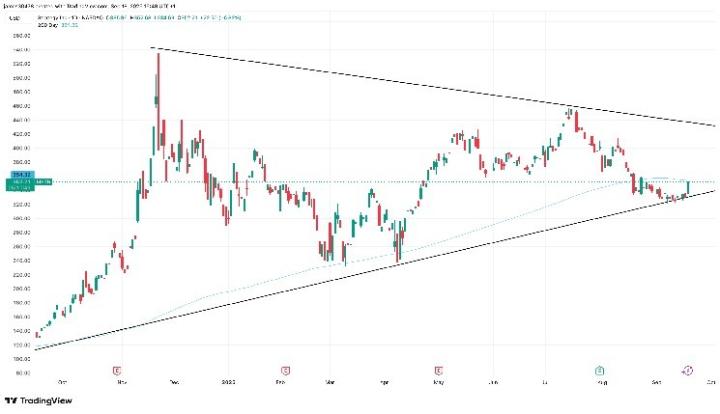With the Federal Reserve (Fed), the US central bank, moving forward with its first interest rate cut of the year, market attention is focused on the direction of future monetary policy. This decision, a 0.25 percentage point cut, is interpreted as a measure reflecting the dual risks of a slowing job market and a rebound in inflation.
The Federal Open Market Committee (FOMC) recently lowered its benchmark interest rate to a range of 4.0% to 4.25%. This was in line with investor expectations. In a press conference immediately following the announcement, Federal Reserve Chairman Jerome Powell stated, "The unemployment rate remains low, but the pace of job growth is slowing, and inflation pressures have resurfaced." He particularly emphasized the increased downside risks to the job market.
However, opinions were divided internally. Incoming Fed Governor Stephen Miran, who is considered to succeed Powell, voiced a dissenting opinion, arguing for a larger 0.5 percentage point cut. This shift was also driven by political factors. Miran, a Trump appointee, supports a more aggressive easing policy. Experts are raising the issue of increasing polarization within the Fed.
Nine of the 15 Fed members believe two more rate cuts are necessary this year, while six predict a freeze. This further increases market uncertainty. Indeed, US GDP growth slowed significantly in the first half of this year to 1.5%, down from 2.5% last year, with a decline in consumption cited as the primary cause.
Michael Pierce, deputy chief U.S. economist at Oxford Economics, said, "This decision is a judgment to hedge against labor market risks, and future interest rate decisions will also depend on employment data."
Market reaction is also noteworthy. The CME futures market is pricing in an 87.7% chance of an additional 0.25 percentage point cut at the October FOMC meeting. With inflation currently at 2.9%, exceeding the Fed's 2% target, and having risen for four consecutive months, this is also a key variable in determining policy direction.
Meanwhile, the cryptocurrency market reacted calmly to the rate cut. As this was a measure the market had already anticipated, fluctuations were limited. Bitcoin (BTC) rose to $118,000 (approximately KRW 164.02 million) at one point during the session, but later adjusted slightly to $117,500 (approximately KRW 163.33 million). Conversely, Ethereum (ETH) surged 3%, breaking through $4,600 (approximately KRW 6.39 million), while major altcoins such as Solana (SOL), Dogecoin (DOGE), Ada (ADA), Hyperliquid, and Avalanche (AVAX) all showed gains.
Attention is focused on how the Federal Reserve's future pace adjustments will impact the overall financial market and the cryptocurrency market. Market tensions are particularly high over the extent to which political variables will influence the direction of monetary policy.
Get real-time news... Go to TokenPost Telegram
Copyright © TokenPost. Unauthorized reproduction and redistribution prohibited.








